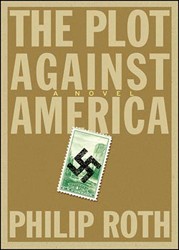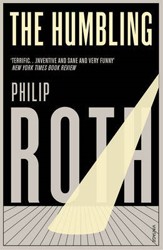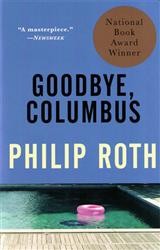Philip Roth’s unnamed protagonist, our Everyman, is dead and buried at 71 at the very opening of this extraordinary novella, a work which encompasses not only many of Roth’s signature themes and paradoxes — ecstasy and dread, tender sentimentality and raw sexuality, risk and regret — but also much of life’s central concerns— survival, relationships, identity, right behavior, meaning, aging, and mortality.
Roth has flirted with the idea and reality of death in earlier work, including The Counterlife, Sabbath’s Theatre, and The Dying Animal, but here he goes full throttle. From the very beginning, for his epigraph for the book, he chooses these lines from John Keats’ “Ode to a Nightingale”: “Here where men sit and hear each other groan;/When palsy shakes a few, sad, last grey hairs,/Where youth grows pale, and spectre-thin and dies;/Where but to think is to be full of sorrow…” We learn throughout that “life’s most disturbing intensity is death.”
Everyman’s older brother, Howie, at the graveside, in a voice husky with emotion whispers to his wife, “My kid brother. It makes no sense.” Neither did it make sense to Roth’s central character, who eventually came not only to envy generous and loveable Howie, but to hate him for remaining “triumphantly healthy” all of his life. Although Everyman had had a bout with serious illness in his adulthood, he continued to count on a generally healthy and relatively long future. He discovers, however, after a series of blockages — coronary, renal, and carotid — that “old age isn’t a battle; old age is a massacre.” And, perhaps even more cruelly, he has to endure it alone.
The son of Jewish immigrants who built literally from nothing and in the middle of the Great Depression a moderately successful jewelry business in Elizabeth, New Jersey, Everyman became an art director for an advertising agency. At this he more than succeeded. But he was thrice divorced and alienated from the two unforgiving sons of his first marriage. He was distinguished by what he himself calls his “misdeeds” — mistakes engendered mainly by the revival of intense sexual desire in the face of postmiddle age. Everyman tries to justify his behavior to his sons (but mostly to himself) by claiming that he was not the only “one of the millions of American men who were party to a divorce that broke up a family.” He had, after all, physically abused no one. Nor had he failed to support them, or even to make overtures of reconciliation. But he is a repeat offender, leaving behind 13-yearold Nancy, the daughter of his second marriage. “Decomposing families,” he admits sadly, “was his specialty.”
In a searing and memorable denunciation of her husband’s sexual escapades, Nancy’s mother, Phoebe, an intelligent and giving woman, and a virtually flawless partner for Everyman, asks him why he should “want to unhinge everything?” She supplies her own answer. For Everyman, “physical affection, tenderness, comradery (sic),…closeness,” is not enough. He is, she says, “a man who cannot live without.” But he will have to live without. For although Roth manages here to celebrate the exquisite physical splendor expressed in sexual desire and performance, indeed in everything the body offers, the attempt by Everyman to retrieve what David Kepesh in The Dying Animal calls an “erotic birthright,” to beat off the indignities and infirmities of aging by chasing and temporarily possessing young female bodies, always ends in meaninglessness.
Everyman comes close to asking himself the same question posed by Tolstoy’s protagonist in “The Death of Ivan Ilych”: “What if in reality all my life, my conscious life, has been not the right thing?” We learn early in the book that Everyman is an atheist; he abides no “hocus-pocus” about death or God or heaven. “There was,” he insisted, “only our bodies.” But as he approaches his end, Everyman, perhaps seeking connection to another more secure, more ordered time, visits the cemetery of his parents, the same burial ground in which he will be interred and that opens the book. “His mother had died at eighty, his father at ninety. Aloud he said to them, ‘I’m seventy-one. Your boy is seventy-one.’ ‘Good. You lived,” his mother replied, and his father said, ‘Look back and atone for what you can atone for, and make the best of what you have left.’ But overwhelmed with emotion, Everyman longs instead “for everyone to be living. And to have it all over again.”
This is Roth’s darkest work. There is little consolation here. But there is, in this small masterpiece, the beauty of Philip Roth’s language, the cadence of which is often Shakespearean or Biblical. And there is Roth’s remarkable ability, even as he ruminates about the inexorability of death, to make this intimate personal story, which invokes the glory of having lived, of having had sensuous experience, our own.





